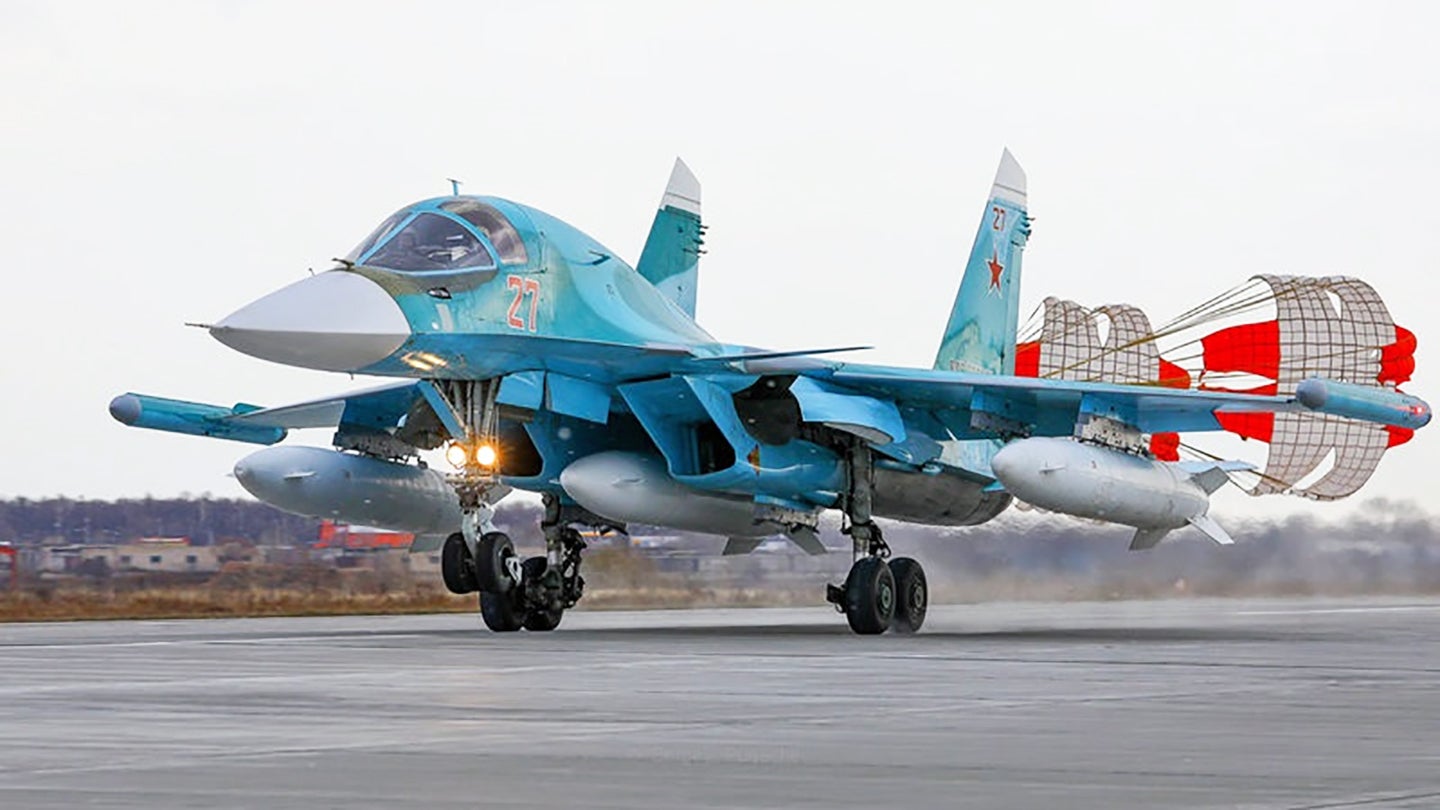The Russian Aerospace Forces’ Sukhoi Su-34 Fullback strike aircraft, also known by its nickname ‘Hellduck,’ is pretty much an anomaly among military aircraft in production today, with a mission profile that’s close to unique and in many ways a hangover from the Cold War. One aspect that’s notably impressive about the platypus-nosed jet is its ability to carry a staggeringly large amount of fuel for a tactical jet, leading to some potentially very long-range missions, even without aerial refueling. It truly is the king of the fast jets when it comes to how much gas it can lug into the air.
While the Su-34 is, at the DNA level, a member of the Flanker family of fighters, and while it retains a secondary air-to-air capability, its direct origins are as a dedicated strike aircraft — or a tactical bomber in Russian terminology. Studies for a strike-optimized development of the Su-27 Flanker began as early as 1977, with the aim of using as much of the fighter’s airframe as possible but combining it with specialized navigation/attack avionics.
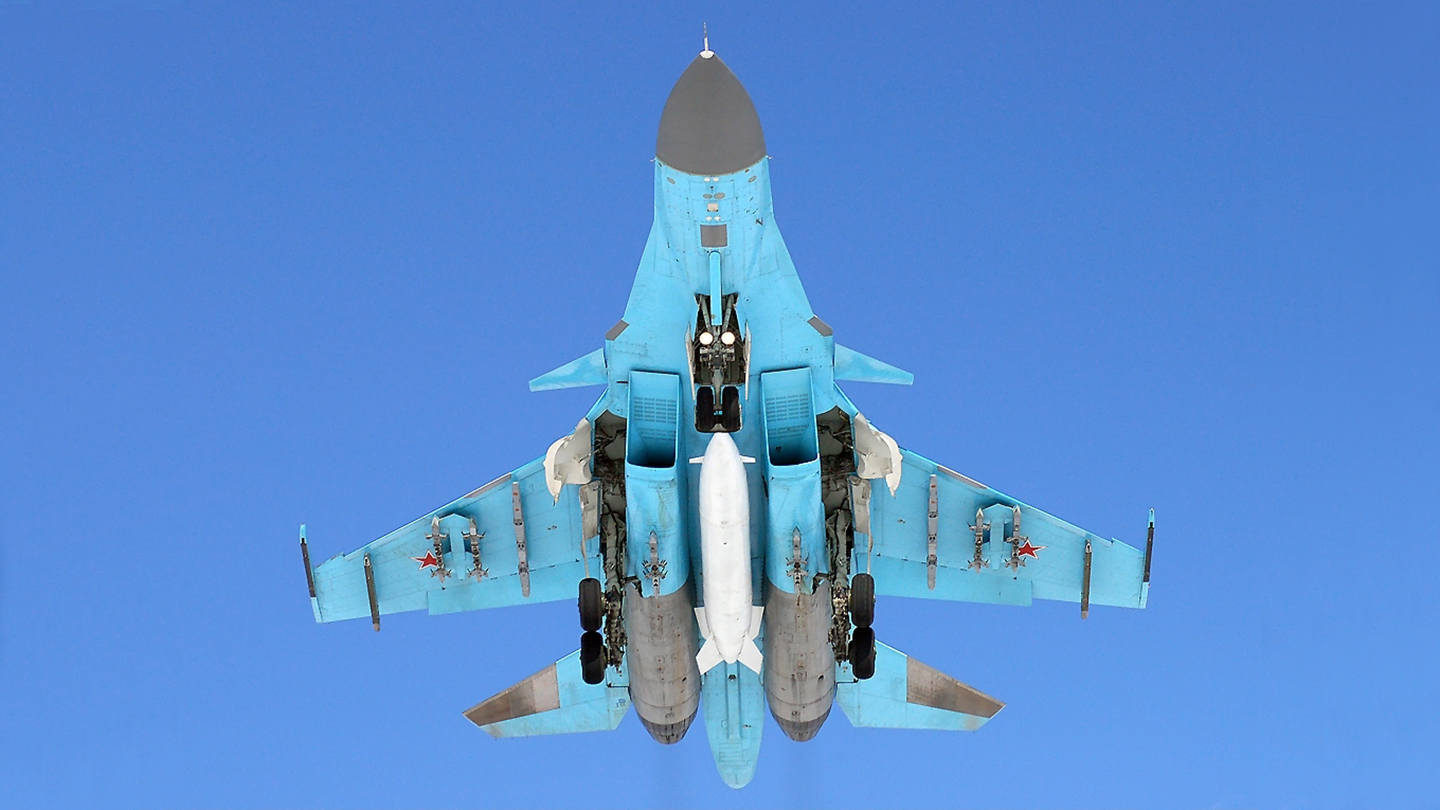
With the production of the Su-24 Fencer variable-geometry strike and reconnaissance aircraft in full flow, the strike Flanker remained a low priority until 1986, when what was then known as the Su-27IB (Istrebitel-Bombardirovshchik, or fighter-bomber) was launched. This would incorporate the Sh141 attack radar that was being developed for the stillborn Sukhoi T-60S strike aircraft, a much bigger aircraft that was closer in concept to the Tu-22M Backfire.
With that decision, the Su-27IB, later redesignated the Su-34, was earmarked as the successor to the Su-24 under the program codename Furor. The aircraft retained much of the Su-27’s airframe, and its engines, but incorporated a much-revised forward fuselage with side-by-side seating for the pilot and the navigator/weapons system operator in an armored compartment. Other major changes included an enlarged tail ‘sting’ projecting out from behind the engines.
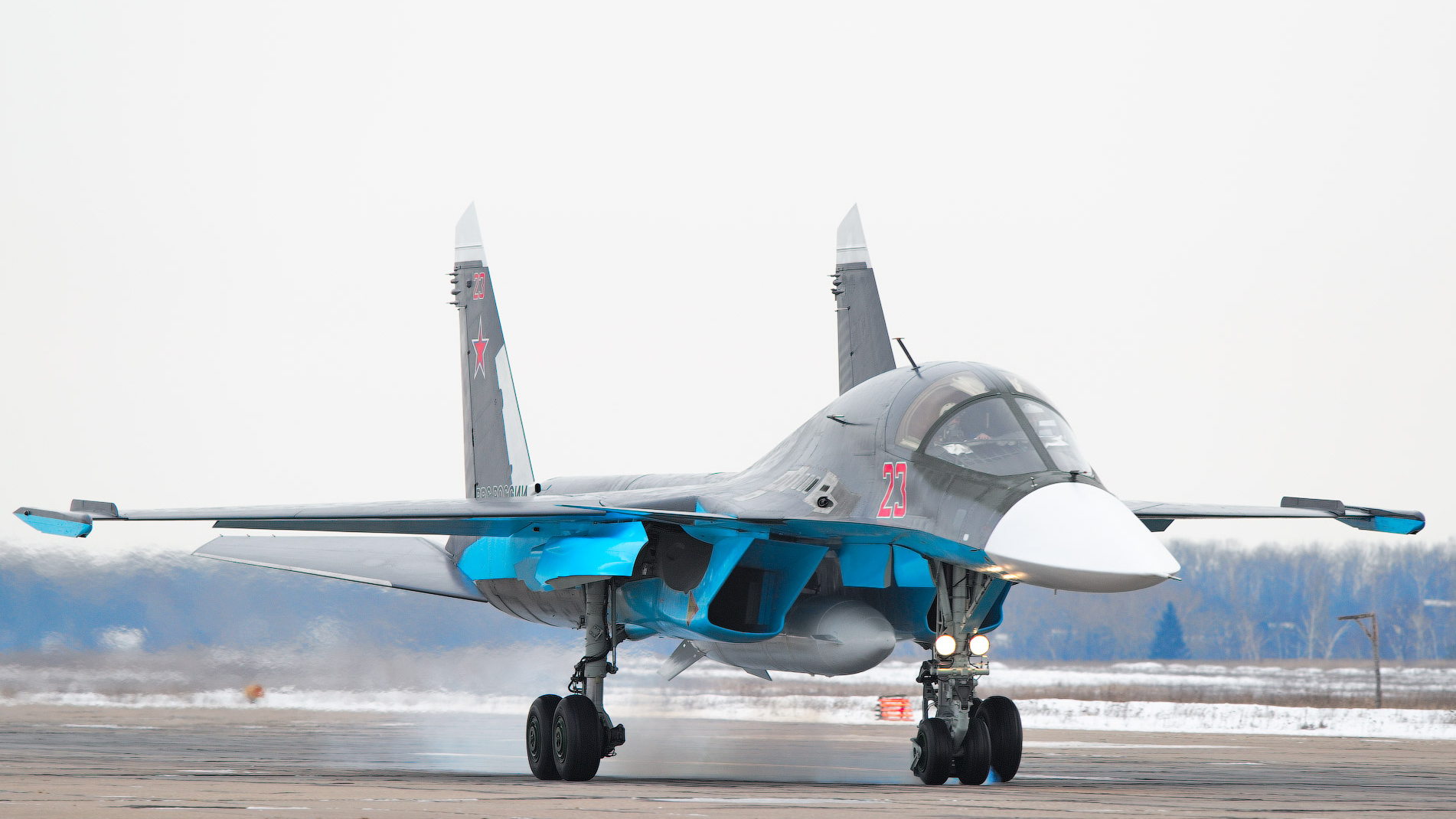
The aircraft that the Su-34 was intended to replace, the Su-24, was often described in the West as being a Soviet counterpart to the F-111. In reality, in terms of its range, it was far closer to the Tornado IDS.
Flying at low level and at 745 miles per hour, with two drop tanks plus weapons, Soviet war planners expected the Su-24 to have a combat radius of only around 370 miles, according to information from Russian aerospace researcher and historian Stefan Büttner. In a nuclear strike role, with two freefall bombs, the operational combat radius was expected to be increased to around 480 miles. In a time of heightened tensions, Su-24s would have been moved from their bases in Poland and Hungary would have been forward-deployed to East Germany and Czechoslovakia.

While the range of the Su-24 was sufficient to hit targets around 90-180 miles behind the front line, it compared poorly to the F-111. Strategic Air Command’s FB-111, for example, could carry a pair of AGM-69 Short-Range Attack Missiles (SRAM), plus four drop tanks, and achieve an operational radius of 1,800 miles.
This shortfall was likely in mind when it came to developing the Su-34. The Su-27 was already well-served when it came to fuel capacity, with five internal tanks containing up to 20,700 pounds of fuel. The original fighter Flanker had no provision for external drop or inflight refueling but still boasted an impressive range — 2,300 miles when flown ‘clean’ at high altitude.
Su-34s practice night refueling in the Southern Military District:

In the Su-34, the internal fuel load was increased to 25,130 pounds — 26,676 according to some sources — and there was now a retractable inflight refueling probe on the port side of the nose. Despite this new capability, unrefuelled range remained of paramount importance, since in the Soviet era (and still today), aerial refueling tankers were assigned to the Long-Range Bomber branch and were not an organic part of tactical aviation doctrine.
On top of this, the Su-34 also has provision for up to three drop tanks, each containing 793 gallons, or equivalent to 5,286 pounds of fuel per tank. These are the same PTB-3000 drop tanks that can be fitted under the fixed portion of the Su-24’s wing and each carries more than the total internal fuel load of an F-5E fighter (4,516 pounds) and just roughly 1,700 pounds shy of the internal fuel volume of the F-16 (7,000 pounds).
In the case of a Fullback flying in a ‘three-bag’ configuration, adding all these fuel reserves together provides a grand total of 40,988 pounds of fuel — or 42,534 according to some sources. That is roughly the equivalent of fueling up 400 cars with 17-gallon fuel tanks or six F-16s’ internal fuel tanks. By contrast, the U.S. Air Force’s current long-range tactical strike specialist, the F-15E, carries a total of 35,550 pounds of fuel (including three external tanks plus conformal fuel tanks).
A ferry range of 2,485 miles is possible for the Fullback, marking a huge advance over the Su-24, and allowing the Su-34 to make very long-range deployments, covering almost half the length of Russia. The ferry range is, in fact, very similar to the F-15E, which the Air Force states can reach 2,400 miles — again with the help of conformal fuel tanks plus three external fuel tanks.

More importantly, the Su-34 can achieve a range of 1,864 miles when carrying six 1,100-pound bombs, four air-to-air missiles, and auxiliary tanks, and when flying at high level. Flying a sea level with the same load, the aircraft can still cover an impressive 1,087 miles, based on data published by Russian aerospace expert Piotr Butowski.
Increase the weapons load to 8,800 pounds and the Su-34, flying at low level, can reach targets within a range of 373 miles. That grows to 684 miles when flying at high level.
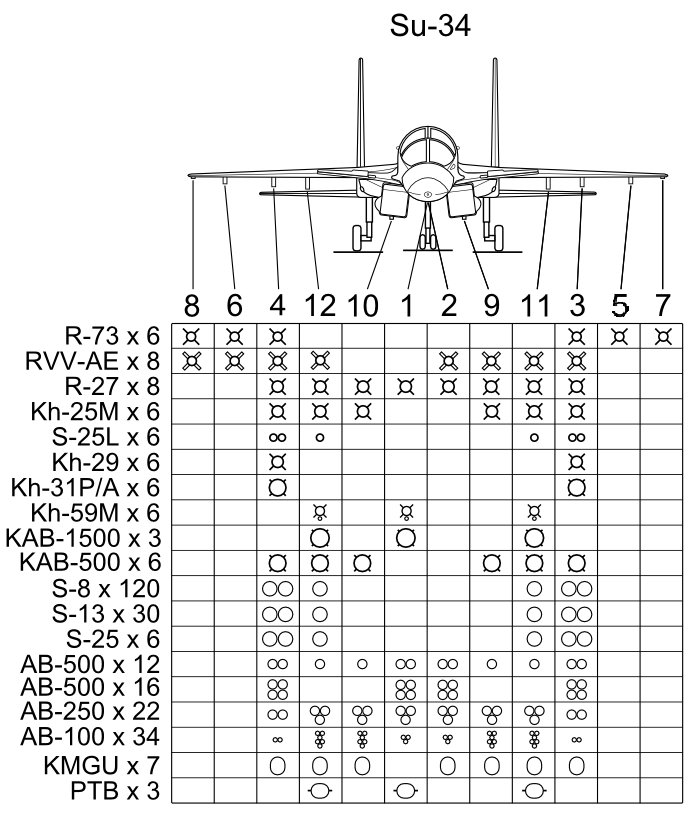
In practical terms, this means that while the Su-24 was anticipated to strike targets 90 to 180 miles behind the front line in a very high-threat environment, the Su-34 can hit objectives over 300 miles behind the front line. This is, after all, still the Fullback’s primary mission, cutting off forward troops from supplies from the rear, by targeting lines communications as well as command-and-control hubs and depots.
As it is, the Su-34 has, so far, been employed on very different kinds of tasks, during Russia’s campaign in support of the Syrian Assad regime, launched in September 2015. During this conflict, Su-34s have mainly carried fairly small weapons loads, with external fuel tanks rarely employed. A typical load during the early days of the campaign comprised just two satellite-guided 1,100-pound KAB-500S bombs or a handful of dumb bombs.
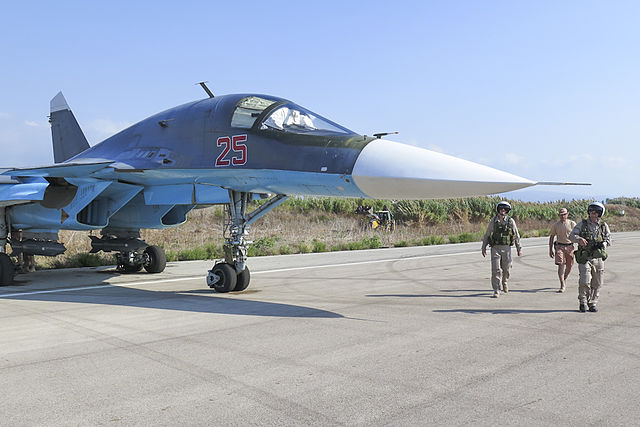
The Fullback has so far only been used in combat in Syria, but should Russia launch a new campaign of offensive operations over Ukraine, it’s likely that Su-34 units would be heavily involved. And, thanks to their prodigious range, Fullback units from bases much further afield in Russia would be able to make a significant contribution too.
Contact the author: thomas@thedrive.com
